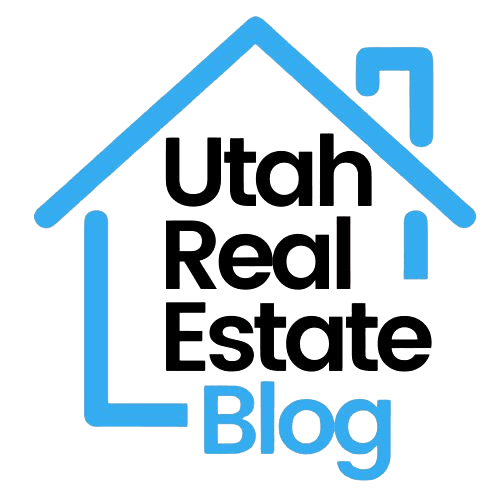Is Utah a high income state? This question often arises when evaluating economic opportunities, living standards, and overall quality of life. Understanding the economic landscape of a state can significantly influence your decisions regarding relocation, investment, or career paths.

Overview of Utah’s Economic Landscape
Utah boasts a unique economic profile characterized by a blend of low unemployment rates, a growing job market, and robust income levels. With a thriving tech industry, outdoor recreation, and an ever-expanding economy, this state has garnered attention as a desirable place to live and work.
Key Economic Indicators
When assessing whether Utah qualifies as a high-income state, several critical economic indicators must be considered:
- Median Household Income: This figure reflects the average income of households in Utah.
- Cost of Living Index: Understanding how far your income stretches in relation to living expenses can provide valuable context.
- Employment Rate: A high employment rate often correlates with economic vitality.
- Industry Diversity: The range of industries present can indicate economic resilience.
These factors collectively contribute to determining Utah’s economic standing.
Median Household Income in Utah
Examining the median household income provides a good starting point for understanding economic prosperity in Utah. As of the latest statistics, the median household income in Utah stands significantly above the national average.
State vs. National Comparison
While the U.S. Census Bureau reports the national median household income around $70,000, Utah exceeds this figure. This difference suggests that, on average, residents in Utah earn more than their counterparts nationally.
| State | Median Household Income |
|---|---|
| Utah | Approximately $78,000 |
| National Average | Approximately $70,000 |
This comparison highlights that residents can generally expect better financial returns.

Cost of Living in Utah
Understanding the cost of living is essential to contextualize income levels. A state may have a high median income; however, if the cost of living is equally elevated, the financial advantage can diminish.
Cost of Living Analysis
In Utah, the cost of living index is relatively moderate, making it attractive for those seeking a balance between income and expenses. Housing, transportation, and groceries are common factors in this comparison. Below is an overview of how Utah’s cost of living compares to the national average.
| Expenditure Type | Utah Cost Index | National Average Cost Index |
|---|---|---|
| Housing | 110 | 100 |
| Transportation | 95 | 100 |
| Groceries | 98 | 100 |
| Utilities | 90 | 100 |
From this table, it becomes clear that while housing may cost slightly more in Utah, other essential living expenses tend to be lower or comparable.
Employment Opportunities in Utah
The employment landscape in Utah is a critical factor in its classification as a high-income state. It’s important to evaluate what types of jobs are available, salary expectations, and the overall job market growth.
Job Growth and Industry Trends
Utah has experienced substantial job growth over the past decade. The influx of industries such as technology, healthcare, and tourism has created diverse employment opportunities.
Key Industries
- Technology: The Silicon Slopes area has emerged as a tech hub, attracting skilled professionals and companies.
- Healthcare: With a growing population, healthcare positions remain in high demand.
- Tourism and Outdoor Recreation: With its stunning landscapes, tourism is a vital industry for the state.
These industries contribute significantly to the state’s economy and provide various high-income job opportunities.
Unemployment Rate
As of recent figures, Utah boasts an unemployment rate around 2.6%, lower than the national average of approximately 4%. This low unemployment rate not only indicates a strong job market but also reflects Utah’s overall economic health.

Industry Diversity
A diverse economy is often a sign of resilience against economic downturns. Utah’s combination of industries promotes stability and continuous growth.
Sector Contributions
Each industry contributes differently to the state’s economy, along with the wages associated with each sector.
| Industry | Percentage of Employment | Average Salary |
|---|---|---|
| Technology | 12% | $100,000 |
| Healthcare | 15% | $75,000 |
| Manufacturing | 7% | $63,000 |
| Tourism | 10% | $50,000 |
| Other Services | 12% | $55,000 |
This overview reveals that while technology and healthcare offer substantial income levels, there are also opportunities in other sectors that provide decent salaries.
Quality of Life in Utah
Beyond income, quality of life is a critical factor that many consider when asking whether Utah is a high-income state. This encompasses aspects such as education, healthcare, crime rates, and overall lifestyle satisfaction.
Education System
Utah is known for its strong education system, which significantly contributes to its high-income status. The state has invested heavily in education, resulting in higher graduation rates and educational attainment levels than the national average.
- High School Graduation Rate: Approximately 88%
- Bachelor’s Degree Attainment: Around 32%
A well-educated workforce attracts businesses and boosts the overall economy.
Healthcare and Well-being
Access to healthcare is another vital component of quality of life. Utah ranks favorably in many health-related statistics.
- Health Insurance Coverage: About 90% of residents have health insurance.
- Life Expectancy: Utah residents have one of the highest life expectancies in the nation.
With low healthcare costs compared to national averages and a focus on preventative care, the state maintains high health standards.
Safety and Crime Rates
Safety is often a significant factor affecting quality of life. Utah has low crime rates compared to the national average, contributing positively to community well-being.
- Property Crime Rate: Approximately 20% lower than the national average.
- Violent Crime Rate: Utah ranks lower than several other states.
A secure living environment can enhance lifestyle satisfaction and increase desirability for potential residents.
Demographic Trends
Understanding the demographic landscape is also essential when determining economic opportunity. Utah’s population has grown rapidly, significantly influencing income levels and economic growth.
Population Growth and Migration
Utah has experienced one of the fastest population growth rates in the nation. The reasons behind this trend often relate to lifestyle choices, economic opportunities, and family-oriented environments.
- Population Increase: Approximately 2.1 million residents.
- Annual Growth Rate: Around 1.7%.
This steady influx of people contributes to the availability of jobs and housing, enhancing the overall economy.
Future Economic Projections
When considering whether Utah is a high-income state, it’s beneficial to look at future economic trends.
Economic Growth Forecast
Analysts expect Utah’s economy to continue to grow in the coming years, driven by diverse job creation and continuous investments in technology and infrastructure.
- Job Growth Projection: Estimated to increase by 14% in the next five years.
As investment continues to pour into the state, you can anticipate sustained economic growth, leading to more high-income opportunities.
Business-Friendly Environment
Utah’s government policies favor businesses. Factors such as relatively low taxes and supportive regulatory environments foster business growth.
- Corporate Tax Rate: Approximately 4.95%, one of the lowest in the U.S.
- Rank for Business Climate: Utah consistently ranks in the top 10 for business climates nationally.
These conditions are essential as they encourage new businesses to enter the state, further enhancing job creation.
Conclusion: Is Utah a High-Income State?
Through evaluating median household income, the cost of living, employment opportunities, and overall quality of life, you can conclude that Utah does indeed qualify as a high-income state. With a growing economy, a diverse range of industries, and a commitment to education and health, Utah offers residents a promising economic landscape.
Your decision to assess the economic viability of moving or investing in Utah should take into account these multifaceted aspects. The combination of financial well-being and quality of life offerings makes this state a significant contender for those seeking prosperous opportunities.



